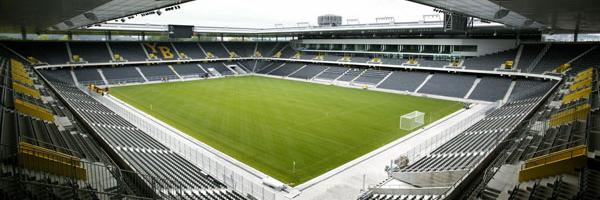
Artificial turf may be making a come-back in the English Football League any time soon. The turf, increasingly popular in the European football leagues, had been banned from the Football League in 1995, but the governing body last week announced to start a consultation round which may lead to a change of rules.
In the 1980s four English clubs, Preston, QPR, Luton and Oldham, made the switch to artificial turf, but after a review in 1989 the FA decided to ban artificial surfaces. However, the turf of that time was nowhere near the quality of the turf today, and several clubs in the lower leagues have been tentatively informing on the possibilities of a rule change.
As the main benefits of playing on artificial turf are generally mentioned cost savings, increased revenue, and less postponed matches.
Though having a higher initial cost, artificial surfaces have less regular maintenance costs. Money could furthermore be saved by having the first, reserve, and youth teams train and play at the same pitch. Higher income could be achieved by opening the stadium up for more outside events without any negative effects on the condition of the pitch.
Opponents of artificial pitches have often argued that the use of artificial pitches leads to increased injuries, that the ball behaves differently, and that the home team has an advantage by being used to the different conditions. And though this may have been the case of the artificial surfaces of the eighties, there is currently no evidence (pdf) that supports any of these claims.
FIFA has been more supportive than the FA, and has already created its own certification of artificial turf, as well as started a preferred producer initiative. Artificial pitches are allowed in most competitions, however to host a European Cup final real grass is required. FIFA does also add that their recommendation to use artificial pitches only applies for regions where weather conditions negatively affect the use of a natural pitch.
Luzhniki is probably the highest-profile stadium with an artificial pitch, but they are fairly common in, for example, the Norwegian league, and have also recently been introduced in the Serie A by Italian sides Cesena and Novara, in Ligue 1 by French clubs Lorient and Nancy, and have already been used for several years by Dutch Eredivisie sides Heracles Almelo and Excelsior.
Stadiums in the other top European leagues, the Bundesliga and Primera División, are however still exclusively equipped with natural pitches, and it is also not likely that the smell of grass will disappear from the Premier League any time soon. For England’s lower leagues though, tradition may soon have to give in for plastic.